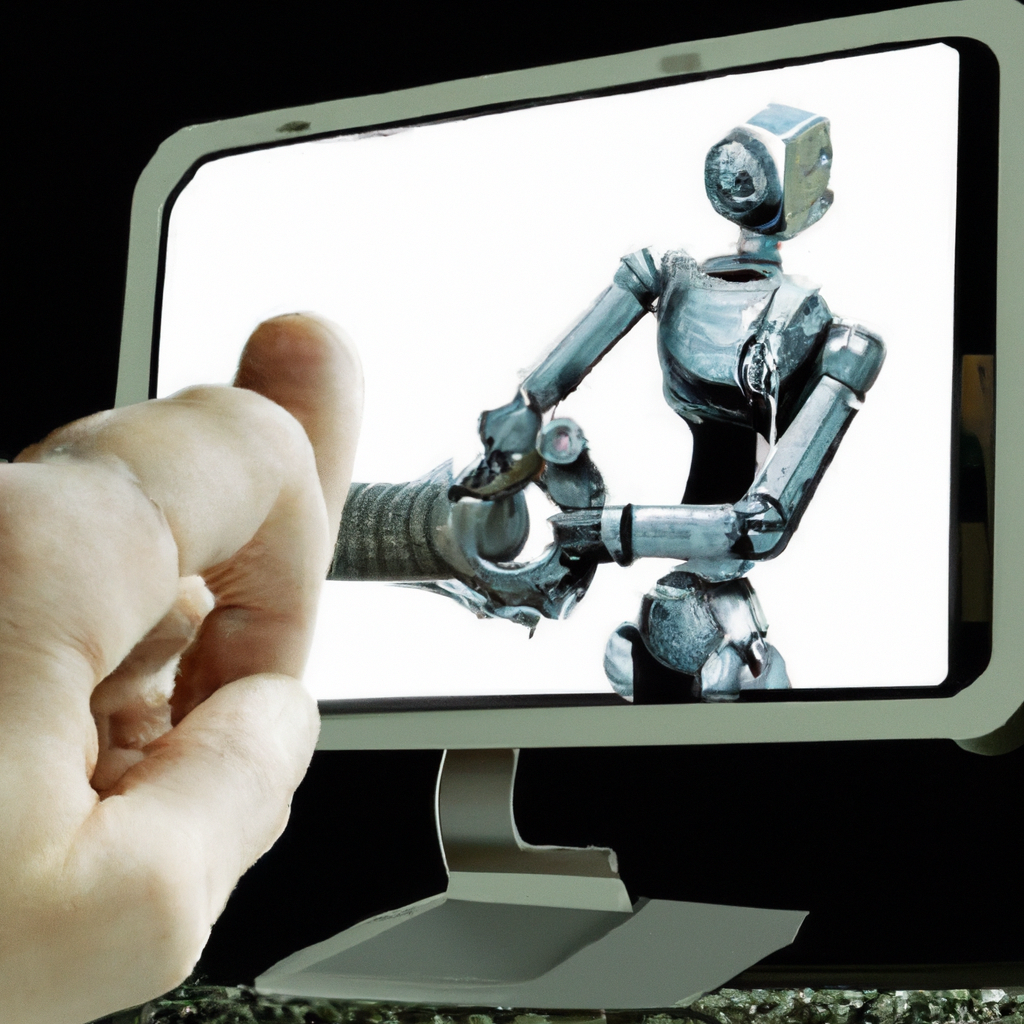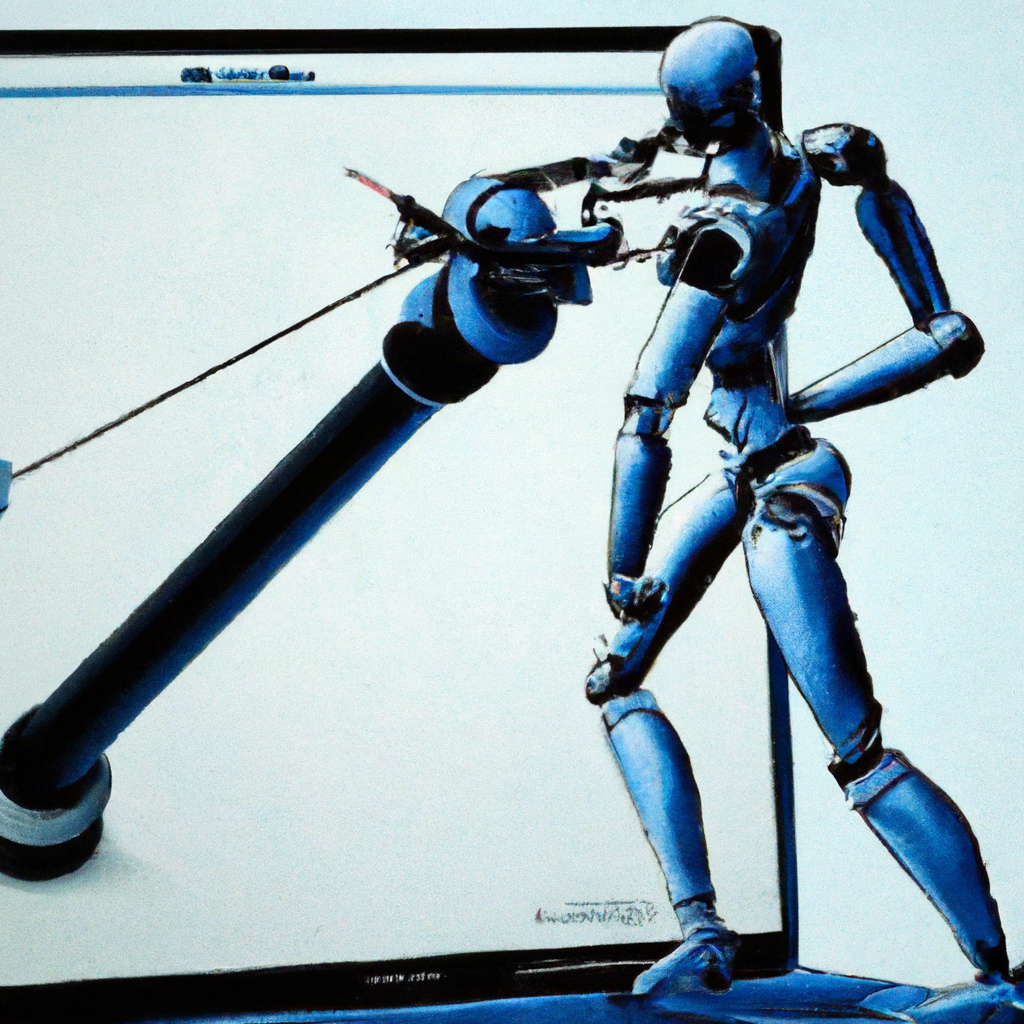In an era of rapidly advancing technology, there is a growing concern about the impact of Artificial Intelligence (AI) on the job market. People are questioning whether AI will take over their jobs and, if so, which ones are most at risk. As industries embrace automation and AI systems become increasingly capable, this article delves into the potential implications for various professions. Join the conversation as we explore the ever-evolving relationship between AI and employment, and uncover which jobs may face the highest level of disruption.

The Impact of AI on Jobs
Artificial intelligence (AI) has become an increasingly prevalent and influential force in the modern workplace. As technology continues to advance, there is growing concern about the potential impact of AI on jobs. This article aims to provide a comprehensive understanding of the role of AI in job automation, examine the potential effects on the labor market, analyze different perspectives on the AI job takeover, and explore how individuals and society can prepare for an AI-driven future.
Understanding the role of AI in job automation
AI refers to the development of computer systems that can perform tasks that would typically require human intelligence. These systems are capable of learning, reasoning, and problem-solving, which enables them to automate various processes and tasks.
The role of AI in job automation is to streamline repetitive and predictable tasks, improving efficiency and reducing human error. AI technologies can analyze large amounts of data, recognize patterns, and make autonomous decisions, often faster and more accurately than humans. This increased automation has the potential to reshape industries and the labor market as a whole.
Examining the potential effects on the labor market
The potential effects of AI on the labor market are a topic of much debate and speculation. While some argue that AI will lead to mass job displacement and unemployment, others believe that it will simply augment human capabilities, creating new roles and opportunities.
One of the most significant concerns surrounding AI is the displacement of workers in jobs that are susceptible to automation. Repetitive and predictable tasks such as data entry, administrative work, manufacturing, assembly line work, and customer service roles are particularly vulnerable. These jobs often involve routine activities that can be easily automated using AI technologies and robotics.
However, it is essential to note that not all jobs are at equal risk. Creative and artistic fields, complex decision-making and critical thinking roles, as well as jobs requiring empathy and emotional intelligence are less likely to be taken over by AI. Highly skilled and specialized professions that involve creativity, innovation, and human connection are more likely to withstand automation.
Analyzing the different perspectives on the AI job takeover
The debate surrounding AI job takeover rests on differing perspectives. Some argue that AI will lead to massive job displacement, causing a surge in unemployment rates. Others contend that AI will create new job opportunities and enhance productivity, leading to economic growth.
While it is true that AI will undoubtedly disrupt certain industries and displace certain jobs, history has shown that technological advancements often create more jobs than they eliminate. AI can lead to the creation of new roles in fields such as data science, machine learning, and AI development itself. Human expertise will continue to be in demand in domains that require creativity, critical thinking, and adaptability.
Nonetheless, there is a need to prepare for potential job displacement and equip workers with the skills needed for the AI-driven future. Governments, businesses, and individuals must collaborate to ensure a smooth transition and minimize any negative economic and social implications.

Jobs Vulnerable to AI Takeover
While AI has the potential to impact a wide range of industries, certain jobs are more vulnerable to automation than others. Let’s take a closer look at some of the jobs that are at higher risk of AI takeover.
Repetitive and Predictable Tasks
Repetitive and predictable tasks, such as data entry and processing, are highly susceptible to automation. AI algorithms can quickly and accurately handle these tasks, reducing the need for manual input and increasing efficiency.
Data Entry and Administrative Jobs
Data entry and administrative jobs often involve routine tasks such as filing, organizing, and managing information. AI technologies can streamline these processes by automating data entry through optical character recognition and natural language processing algorithms.
Manufacturing and Assembly Line Workers
Manufacturing and assembly line workers are facing increased automation through the use of robotics and AI technologies. Machines can perform tasks such as assembling, packaging, and quality control with greater precision and speed, reducing the need for human intervention.
Customer Service Roles
AI-powered chatbots and virtual assistants are becoming increasingly sophisticated, capable of handling customer inquiries and providing support. As AI technologies continue to advance, customer service roles, especially those involving repetitive and standardized queries, may be at risk of being replaced by automated systems.
Transportation and Delivery Services
With the development of autonomous vehicles and drones, transportation and delivery services may also face significant disruption. AI-powered systems can navigate routes, optimize logistics, and carry out deliveries more efficiently, potentially reducing the need for human drivers.
While these jobs are identified as higher risk, it is important to note that the impact of AI on jobs is not limited to these specific roles. The potential for automation exists across various industries and should be considered when discussing the future of work.
Emerging Technologies and Their Impact
To understand the potential impact of AI on jobs, it is crucial to examine the emerging technologies driving this transformation. Here are some of the key technologies in AI and their implications for the labor market.
Machine Learning and AI advancements
Machine learning algorithms enable computers to learn from data and improve their performance without being explicitly programmed. This technology powers many AI applications and is driving significant advancements in various industries, including healthcare, finance, and manufacturing.
These advancements in machine learning and AI have the potential to automate tasks that were once exclusively performed by humans, leading to both job displacement and the creation of new roles requiring more advanced technical skills.
Robotics and Automation
Robotics and automation technologies have seen significant progress, making them increasingly capable of performing complex physical tasks. Robots can be employed in manufacturing, logistics, healthcare, and other industries to automate repetitive, dangerous, or physically demanding jobs.
As robotic capabilities continue to advance, it is likely that more jobs involving manual labor will be automated. However, these advancements also present opportunities for collaboration between humans and robots, with humans focusing on tasks that require critical thinking, problem-solving, and creativity.
Natural Language Processing
Natural language processing (NLP) is a subfield of AI that focuses on enabling computers to understand, interpret, and respond to human language. NLP plays a crucial role in chatbots, virtual assistants, and voice recognition systems.
The adoption of NLP technologies can improve customer service efficiency by automating responses to queries and providing personalized recommendations. However, jobs that require human interpretation, empathy, and nuanced understanding of language and context are less likely to be replaced by NLP-driven systems.
Computer Vision and Image Recognition
Computer vision and image recognition technologies enable computers to understand and interpret visual information. These technologies find applications in areas such as facial recognition, object detection, and autonomous vehicles.
While computer vision and image recognition can automate certain tasks like quality control and object identification, jobs that require human visual perception, interpretation, and decision-making are less susceptible to automation. Fields such as art, design, and fashion, which rely heavily on visual creativity, are expected to be less impacted by these technologies.

Jobs with Low Risk of AI Takeover
Not all jobs are equally vulnerable to AI takeover. Some roles require complex human skills and qualities that are difficult to replicate with current AI technologies. Here are some examples of jobs that are less likely to be replaced by AI.
Creative and Artistic Fields
Jobs that involve creativity, originality, and artistic expression are less likely to be automated. Fields such as writing, music composition, visual arts, and creative direction rely on human intuition, emotion, and imagination, making them less susceptible to AI takeover.
Complex Decision-Making and Critical Thinking Roles
Roles that require complex decision-making, strategic thinking, and problem-solving are less likely to be automated. Professions such as management, policy-making, research, and development involve navigating uncertainties, evaluating multiple factors, and making judgments that encompass both human and societal values.
Jobs Requiring Empathy and Emotional Intelligence
Jobs that involve interpersonal relationships, emotional support, and empathy are challenging to automate. Examples include counseling, therapy, social work, nursing, and teaching. These roles depend heavily on human-to-human connections and understanding of human emotions, making them less likely to be fully replaced by AI.
Highly Skilled and Specialized Professions
Highly skilled and specialized professions often require extensive training, expertise, and an in-depth understanding of complex subjects. Jobs in fields such as medicine, law, engineering, scientific research, and computer programming demand significant knowledge, experience, and critical thinking skills that are difficult to replicate with AI technologies.
While these jobs may benefit from AI-powered tools and augmentations, the core roles and responsibilities are expected to remain reliant on human expertise.
Economic and Social Implications
The widespread adoption of AI in the workplace has significant economic and social implications that must be addressed. The potential displacement of jobs and the increasing divide between skilled and low-skilled workers are primary concerns.
Potential job displacement and unemployment rates
The automation of jobs through AI has the potential to displace a significant number of workers. Jobs that involve repetitive and predictable tasks are at higher risk. This displacement can lead to an increase in unemployment rates, especially for those who lack the skills required for new roles created by AI.
Income inequality and its connection to AI
Income inequality is a pressing issue that AI adoption can exacerbate. As AI advances, skilled workers with technical expertise will be in high demand, potentially leading to increased wages for those in specialized roles. At the same time, low-skilled workers who are vulnerable to job displacement may face limited job opportunities and lower wages, further widening the income gap.
Adapting to a technology-driven job market
To adapt to a technology-driven job market, it is crucial for individuals to develop relevant skills and stay adaptable. Continuous learning, acquiring new technical or analytical skills, and embracing lifelong learning are essential for remaining competitive in the job market.
Businesses and educational institutions need to collaborate to provide training programs and educational opportunities that equip individuals with the skills needed to thrive in an AI-driven economy.
Reskilling and retraining the workforce
To address the potential job displacement caused by AI, there is a need for reskilling and retraining programs. Governments, businesses, and educational institutions should invest in programs that help displaced workers acquire new skills and transition into emerging industries and roles. This can help alleviate the negative impact of job displacement while ensuring a skilled and adaptable workforce.

Potential Benefits of AI in the Workplace
While there are concerns about the impact of AI on jobs, it is important to recognize the potential benefits that AI can bring to the workplace. Here are some positive effects of AI adoption.
Increased efficiency and productivity
AI technologies streamline processes and tasks, reducing the time and effort required to complete them. By automating routine and repetitive tasks, AI can free up human workers to focus on more complex and value-added activities, leading to increased overall efficiency and productivity.
Reduced human error and safety risks
Humans are prone to errors, especially when performing repetitive and monotonous tasks. AI technologies can minimize human error and improve accuracy by performing tasks with consistent precision. In industries such as healthcare, transportation, and manufacturing, where human error can have severe consequences, AI can significantly enhance safety.
Augmented decision-making and problem-solving
AI-powered tools can assist humans in making more informed decisions and solving complex problems. By analyzing vast amounts of data and identifying patterns, AI can provide valuable insights and recommendations to support human decision-making. This combination of human expertise and AI capabilities can lead to more effective decision-making processes.
Enhanced customer experience and personalization
AI technologies enable businesses to deliver personalized experiences to customers. By analyzing customer data, preferences, and behavior, AI can provide tailored recommendations, anticipate needs, and improve the overall customer experience. Chatbots and virtual assistants can also offer real-time assistance and support, enhancing customer satisfaction.
Governmental and Policy Considerations
As AI continues to advance and affect the labor market, there is a need for effective governmental and policy considerations to ensure responsible and ethical AI adoption. Here are some key areas that require attention.
Implementing regulations for AI adoption
Governments need to establish regulations and framework to govern the use of AI technologies. These regulations should address issues such as data privacy, algorithmic fairness, transparency, and accountability. By setting clear guidelines, governments can balance the benefits of AI with potential risks and ensure ethical and responsible AI adoption.
Addressing ethical and legal issues
AI raises ethical and legal questions that need to be addressed. Issues such as bias in algorithms, security concerns, and potential job displacement require careful consideration. Governments, businesses, and society as a whole need to engage in ongoing discussions and collaborate to establish ethical standards and guidelines for AI development and implementation.
Ensuring transparency and accountability
Transparency and accountability are crucial aspects of AI adoption. Users should be aware when interacting with AI systems, understanding how their data is being used and the decision-making process employed by AI algorithms. Establishing mechanisms for accountability and auditing AI systems can help address concerns about biases, discrimination, and potential misuse.
Providing support during job transitions
Government policies and programs should aim to support displaced workers and facilitate job transitions. This can include financial assistance, job training and reskilling programs, and provisions for healthcare and unemployment benefits. Governments and businesses must collaborate to ensure a smooth transition for individuals and minimize the negative social and economic ramifications of AI-driven job displacement.

Current Trends and Statistics
To gain a deeper understanding of the impact of AI on jobs, it is helpful to examine current trends and statistics. The following data provides insights into the state of AI adoption and its effects on the labor market.
Statistics on AI job displacement
According to a report by the World Economic Forum, it is estimated that by 2025, AI and automation could displace 85 million jobs but create 97 million new jobs globally. While this suggests a net positive job growth, there will be a significant need for reskilling and upskilling.
Examples of industries already impacted by AI
Several industries have already experienced the impact of AI. For example, the retail industry has seen automation in warehouses and cashier-less checkout systems. Healthcare has embraced AI for medical diagnosis, drug discovery, and patient monitoring. Financial services have adopted AI for fraud detection, algorithmic trading, and customer service.
Job market projections for the future
The job market is expected to undergo significant transformations in the near future due to AI adoption. While certain jobs may be automated, new roles will emerge, focusing on managing AI systems, analyzing data, and developing AI technologies. Industries such as healthcare, finance, manufacturing, and transportation are likely to see substantial changes in the job landscape.
New job opportunities created by AI
While AI may displace some jobs, it also creates new opportunities. The demand for professionals with skills in data science, machine learning, AI development, and cybersecurity is expected to rise. Job roles focused on the ethical, legal, and social implications of AI, such as AI ethicists and policy analysts, are also emerging.
Preparing for an AI-Driven Future
To prepare for an AI-driven future, it is important to take proactive steps to adapt to the changing landscape. Here are some strategies individuals, businesses, and society can adopt.
Promoting STEM education and technical skills
STEM (Science, Technology, Engineering, and Mathematics) education plays a crucial role in preparing individuals for an AI-driven future. By fostering interest and proficiency in these fields from an early age, individuals can develop the necessary technical skills and knowledge to thrive in an AI-driven job market.
Encouraging lifelong learning and adaptability
Lifelong learning and adaptability are essential in a rapidly evolving technological landscape. Individuals should continuously seek opportunities to acquire new skills, stay updated with industry trends, and remain adaptable to changing roles and requirements.
Businesses should invest in training programs and provide employees with opportunities for upskilling and reskilling. By fostering a learning culture and supporting employees’ professional development, businesses can ensure their workforce is equipped to handle the demands of an AI-driven future.
Fostering entrepreneurship and innovation
Entrepreneurship and innovation are key drivers in an AI-driven economy. Individuals should be encouraged to pursue entrepreneurial endeavors, leveraging AI technologies to create new businesses and job opportunities.
Governments and businesses should provide support and resources for startups and innovation hubs, fostering the development of new technologies and entrepreneurship ecosystems. This can lead to job creation, economic growth, and increased competitiveness in the global AI landscape.
Establishing collaborations between humans and AI
Rather than viewing AI as a replacement for human workers, society should explore ways to collaborate and combine human and AI capabilities. By leveraging AI technologies to augment human skills and decision-making, we can create more efficient, productive, and inclusive workplaces.
Collaborations between humans and AI can enhance creativity, problem-solving, and innovation. The focus should shift from fear of job displacement to identifying opportunities for synergy between humans and AI.
Conclusion
AI is undoubtedly transforming the world of work, with the potential to disrupt various industries and reshape the labor market. While certain jobs are at higher risk of automation, there are also roles that require uniquely human skills and qualities that are difficult to replicate with current AI technologies.
To navigate the AI-driven future successfully, individuals and society need to embrace lifelong learning, adaptability, and a proactive mindset. Governments, businesses, and educational institutions must collaborate to provide support, resources, and training programs that equip individuals with the skills needed for the changing job landscape.
By understanding the potential impact of AI, considering ethical and societal implications, and fostering collaborations between humans and AI, we can harness the benefits of AI while minimizing any negative economic and social consequences. With the right approach, AI can contribute to increased productivity, enhanced decision-making, and improved quality of work and life.










